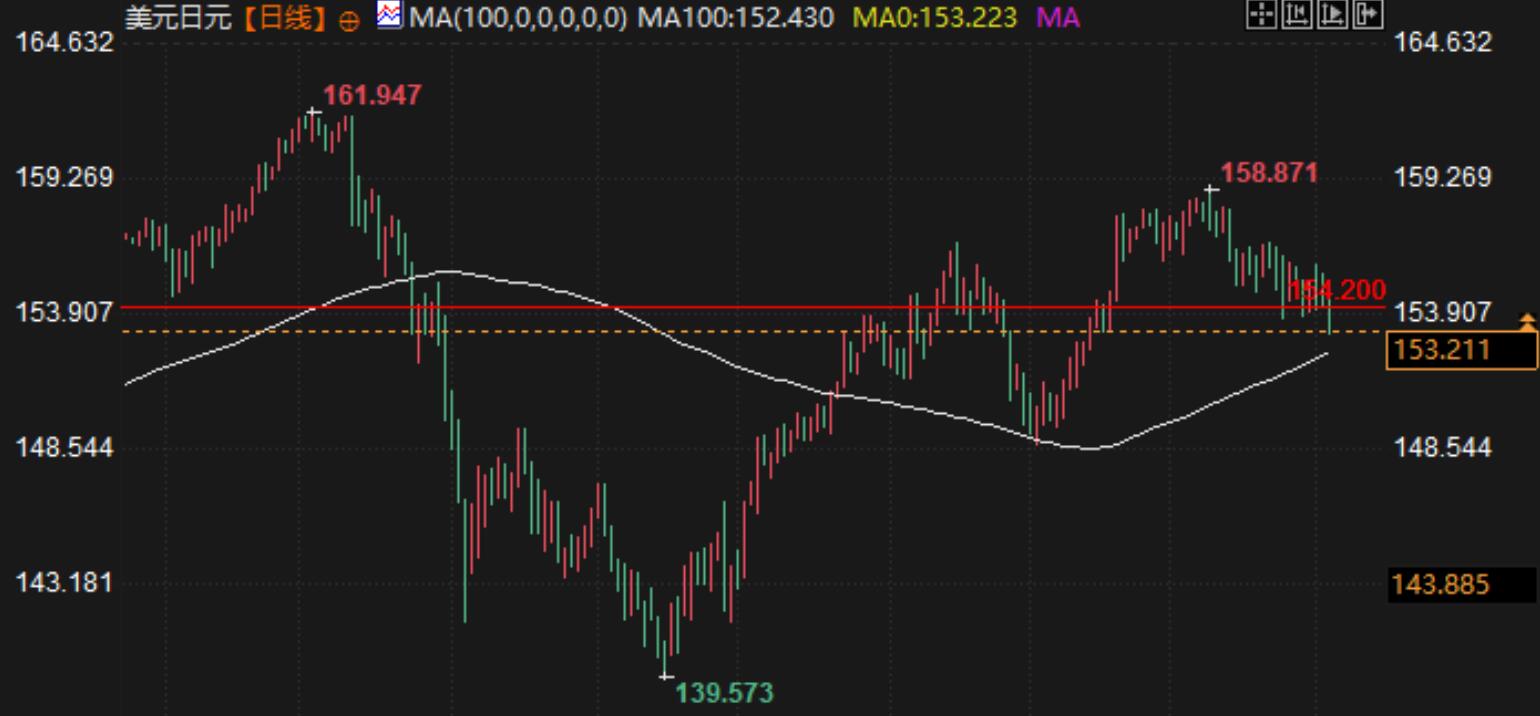Forex Market Analysis: The USD/JPY 154 Line has been breached! Downward channel open
On Wednesday (February 5th), the US dollar against the Japanese yen continued its downward trend from the previous trading day during the Asian session, falling 0.65% during the day and trading near 153.328, approaching a low point in over a month. This trend is mainly influenced by the dual effects of rising expectations of interest rate hikes by the Bank of Japan (BoJ) and the possibility of further policy easing by the Federal Reserve (Fed). At the same time, market concerns over US President Trump's tariff remarks and fluctuations in risk sentiment have also provided support for the yen.
Market background and market overview
Recently, the trend of the USD/JPY has been clearly driven by the divergence of monetary policies. The expectation of the Bank of Japan raising interest rates continues to rise, while the Federal Reserve may further cut interest rates in the coming months, which puts pressure on the US dollar to Japanese yen exchange rate. In addition, the increase in real wages and the rebound in inflation data in Japan have further strengthened market expectations for the Bank of Japan to raise interest rates. According to the latest data, Japan's inflation adjusted real wages increased by 0.6% year-on-year in December, while consumer inflation rate accelerated from 3.4% in November to 4.2%, marking the fastest growth rate since January 2023.
Meanwhile, the employment market data in the United States is showing signs of weakness. The JOLTS report released on Tuesday showed that the number of job vacancies in December dropped to 7.6 million, lower than the expected 8 million and the previous value of 8.09 million. This data indicates that the US labor market is slowing down, providing room for further interest rate cuts by the Federal Reserve. Federal Reserve Vice Chairman Philip Jefferson said on Tuesday that due to the strong economic performance, the Fed does not need to rush to further cut interest rates, but interest rates may decrease in the medium term. This statement further weakens the attractiveness of the US dollar.
Fundamental analysis
The policy direction of the Bank of Japan is undoubtedly the focus of current market attention. Kazuhiro Masahi, Director of Monetary Policy at the Bank of Japan, recently stated that Japan's core inflation rate is gradually moving towards its 2% target, and service prices are also rising moderately. He pointed out that the price increase after the epidemic is mainly driven by cost push factors. This statement reinforces market expectations for the Bank of Japan to raise interest rates. In addition, the continued expansion of service industry activities in Japan has also provided support for the yen. The Purchasing Managers' Index (PMI) for Japan's service sector rose from 50.9 to 53.0 in January, reaching its highest level since September 2024.
On the other hand, policy uncertainty in the United States also puts pressure on the US dollar. President Trump has recently postponed plans to impose a 25% tariff on Canada and Mexico, while market expectations for a breakthrough in trade negotiations have also increased. However, investors are still concerned that Japan may become the next target of Trump's tariff rhetoric. Japanese Prime Minister Shigeru Ishiba plans to meet with Trump later this week, and the dialogue between the two sides may provide more clues for the market.
Technical analysis
From a technical perspective, the risk of further decline of the US dollar against the Japanese yen after falling below the 154.00 level is increasing. The oscillation indicators on the daily chart show that the US dollar/Japanese yen is still in the negative momentum zone and has not yet entered the oversold range, indicating that the downward resistance of the exchange rate is relatively small. In the short term, the exchange rate may further explore the 153.00 level and even test the 152.45 area near the 100 day simple moving average (SMA).
If the exchange rate attempts to rebound, the 154.00 level will become the first resistance level. If it breaks through this level, it may trigger short covering, pushing the exchange rate to the 154.70-154.75 region, and even challenging the 155.00 psychological barrier. However, any further increase may be seen as a selling opportunity, and the exchange rate may encounter strong resistance in the 155.25-155.30 range. If the exchange rate can effectively break through this key resistance level, it may reverse the current bearish trend.

Future Trends and Prospects
Overall, the short-term trend of the US dollar against the Japanese yen still tends to decline. The expectation of interest rate hikes by the Bank of Japan and the prospect of interest rate cuts by the Federal Reserve will continue to put pressure on the exchange rate. In addition, market concerns about Trump's tariff remarks and changes in risk sentiment may further affect the exchange rate trend.
In the coming days, the market will closely monitor the ADP employment data and ISM services PMI data from the United States, which may provide short-term support for the US dollar. However, unless there is significant positive news driving a rebound in the US dollar, the downward trend of the US dollar against the Japanese yen may be difficult to reverse. Investors need to be vigilant about fluctuations in the exchange rate near key support levels and closely monitor the policy movements of the Bank of Japan and the Federal Reserve.
Overall, the short-term outlook for the US dollar against the Japanese yen is bearish, but market sentiment and policy changes may still have a significant impact on the exchange rate. Investors should remain cautious and closely monitor upcoming economic data and policy signals.
Tips:This page came from Internet, which is not standing for FXCUE opinions of this website.
Statement:Contact us if the content violates the law or your rights
